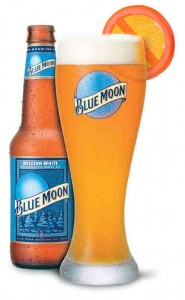 Near the end of April, NABC’s team gathered to brew our first-ever two batches of German-style wheat ale, and I’m happy to report that neither of them is representative of the standard, everyday Hefe-Weizen formulation.
Near the end of April, NABC’s team gathered to brew our first-ever two batches of German-style wheat ale, and I’m happy to report that neither of them is representative of the standard, everyday Hefe-Weizen formulation.
If so, I’d have to shoot myself.
One is a Heller Weizen Maibock called HellBock, and the other a Weizen Doppelbock consciously mimicking a familiar commercial example: Knobentinus.
Mere Hefe-Weizen they’re not, but this disclosure of relative wheatiness still will come as a profound shock to numerous of my compatriots, who’ve been compelled for many years to listen to my choleric denunciations of the genre. It isn’t so much that I have a personal aversion to the style, which suits me in seasonal and situational senses, as when I’m actually in Bavaria, rehydrating after a recreational bicycle ride.
Rather, my annoyance stems from my years as Publican, tending bar, and viewing the carnage unleashed on fledglings by Hefe-Weizen. If left unchecked, Hefe-Weizen quickly attacks aspiring palates, stunting their evolution and deferring proper revolution. Masquerading as a seemingly innocuous “gateway” beer, Hefe-Weizen can quickly proliferate into its own hermetic comfort zone, leading neophytes to forget that comfort zones exist for the sole purpose of being transcended as quickly as possible.
—
Beer style guidelines provide familiar parameters for Hefe-Weizen: Half (or more) wheat and half (or less) barley, barely hopped, and fermented with a special ale yeast that imparts aromas and flavors often associated with apples, bananas and cloves. “Hefe” is the German word for yeast, and “Weizen” means wheat. “Weisse,” or white, is often used somewhat synonymously, as the cloudy appearance of wheat ale prompts descriptions of it as “white.” Even so, there are filtered incarnations (“Kristall”).
“Dunkel” indicates darker malts. Schneider’s famous Hefe-Weizen, my choice for Germany’s finest example of the style (and a brewery I’ve visited twice and enjoyed immensely both times) is as dark as Franziskaner’s Dunkel, although Schneider does not tout it on the label, reminding us that beer style groupings aren’t always exact.
Few folks remember that Hefe-Weizen in Germany staged a remarkable comeback in the 1980’s after very nearly dying out. German-style wheat ale now can be consumed every day if so desired, both in many parts of Germany and also abroad as a result of aggressive export strategies.
But why drink any one beer every day?
Like the Bolshevik leader of old, Leon Trotsky, I am a “permanent revolution” theorist: Having eschewed the monotony of the mainstream, the liberated beer drinker is forever more faced with numerous flavorful options, and it is his or her response to this multiplicity of choice that determines the ultimate success of the craft revolution, in both personal and collective terms.
—
Hefe-Weizen’s role as “starter” for many drinkers is sensible, so long as it doesn’t become the “finishing” beer as well, in the sense of constituting a comfort zone that the consumer clings to Linus’s blanket, and subsequently has no intention of relinquishing.
Worst yet, the comfort zone in metro Louisville often doesn’t even exhibit the many different varieties of Hefe-Weizen available for sampling; rather, it is reduced to one brand: Franziskaner. So, kindly note that Franziskaner is not “German for wheat beer.” There are other wheat ales brewed in Germany, and fine examples of Hefe-Weizen are being brewed right here in the United States.
Go ahead and try them all, but don’t forget to leave the lemon slices in the fridge, because while we’re at it, let’s be Kristall clear about the uses for citrus fruit in beer.
There are no uses for citrus fruit in beer.
If lemons were intended for use in German-style wheat ale, then lemons would grow alongside hops and barley in German fields.
They do not. Do oranges grow in Belgium?
No, and they don’t grow in Golden, Colorado, either, so there is no place for the orange on a glass of Coors’s mock Belgian Wit ale, Blue Moon.
Whether drinking competently conceived German wheat ale, or the wretched carbonated Mexican urine known as Corona, the presence of redundant fruit slices marks you as one who meekly and mindlessly follows prevailing fashion, but training wheels are just that. At some point, it’s time to learn how to ride the bike.
To review: Permanent revolution implies a constant struggle to resolve certain nagging elemental, cosmological problems, like these:
- Does one survey the world’s teeming diversity with a view toward finding the “few,” or the “many”?
- Does one find the perfect song and listen to it to the exclusion of all others, or listen to many songs, finding the essence of pleasure in each?
- Does the beer drinker favor one brand or style of beer, lavishing it with all the cultural implications of brand loyalty, or is the whole world of beer a vast puzzle, with the right beer for the right season, activity, meal or even time of day?
Verily, slavish brand loyalty negates revolutionary consciousness. There is a certain utility in knowing that particular breweries rock, or that a certain beer is the yardstick for its style. However, it is no more conducive to further personal development to drink only Franziskaner (or Guinness, or Sierra Nevada Pale Ale) than it once was to drink only Budweiser or Miller Lite.
Years ago, the beer writer Michael Jackson said that the pursuit of the perfect pint should last a lifetime. He meant there’s always another great beer around the corner, over the next hill, down the street, and we revel in the unfettered joy that derives from searching.
In this way, the beer drinker’s tastes constantly undergo reinvention, and the ensuing revolution truly remains a permanent one.
I’m sure Leon would approve.





